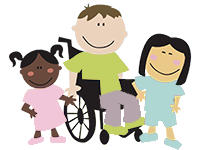Building Blocks for Children with Speech Sound Disorders
[vc_row][vc_column][vc_column_text]Building Blocks for Children with Speech Sound Disorders

78110652 – proper
Developmental problems in children often cause issues with speech, articulation, and communication. The ability to communicate effectively through speech comes from a confluence of finely coordinated motor skills, a good understanding of the language and its nuances, and the mental capacity to convert thoughts into speech using the right words quickly.
You might be parenting a child with speech sound disorders. In that case, it is vital to approach this problem systematically, using a simple-to-complex approach and setting up the right building blocks of practice that can lead to articulate, intelligible speech and effective communication. Here are some basic pointers to help you construct the right practical building blocks for a child with speech sound disorders.
Practicing Words—A Few at a Time
Before your child learns to articulate and combine multiple words effectively, you need to establish a comfort level with single words. It is crucial to select a few essential words and help your child understand and practice those until that comfort level gets established clearly. This way, you avoid overwhelming your child with information while creating a solid base of essential words that can help them create complex speech in due time.
The Right Words for Motivation
The practice of articulating words can become dull and chore-like unless you keep your child motivated by picking areas of interest and excitement and choosing words from those realms. Look at your child’s favorite activities, foods, and toys, and select practice words closely related to these areas of interest. The names of people in the family can also be useful in this regard.
Words for Utility
Effective communication often hinges on practicality. Real-life situations can place specific speech-related demands on your child. Knowing the right words regarding the immediate environment can be a great help in these situations. Words like “want”, “help”, “move”, “bye”, “up”, and “down” can also act as pivot words that can later connect with other words to form useful phrases. These words can be an integral part of the building blocks of practice for children with speech sound disorders.
Answering “wh” Questions
Many real-life communication scenarios hinge on the ability to understand, ask, and answer “wh” questions—who, what, where, when, and why. The most crucial prerequisite to engaging in these scenarios involves an understanding of the notions behind these questions. Focusing on these words in the practice building blocks for your child can help them internalize these notions and deal with such scenarios effectively.
Please feel free to contact us at Speech and Occupational Therapy of North Texas for a consultation regarding any kind of expert help with children with speech sound disorders.[/vc_column_text][/vc_column][/vc_row]
